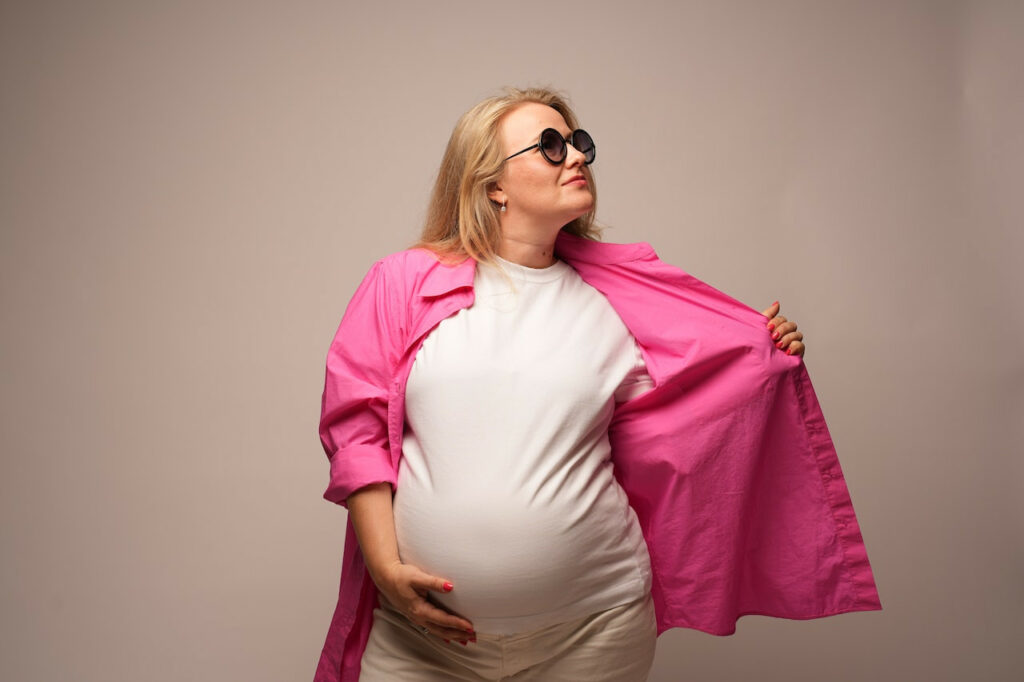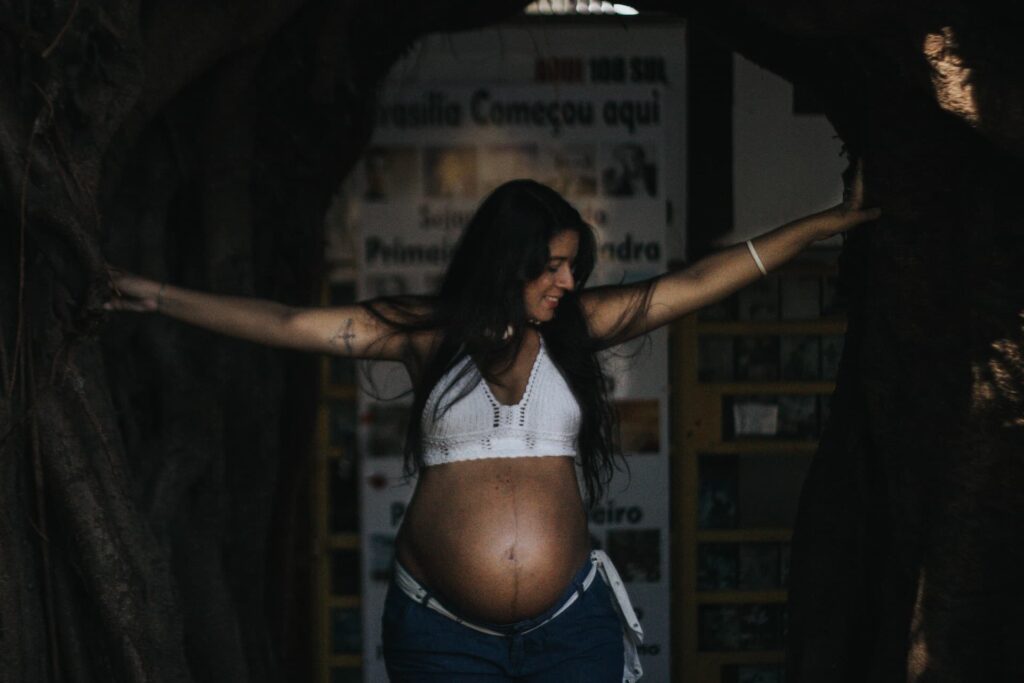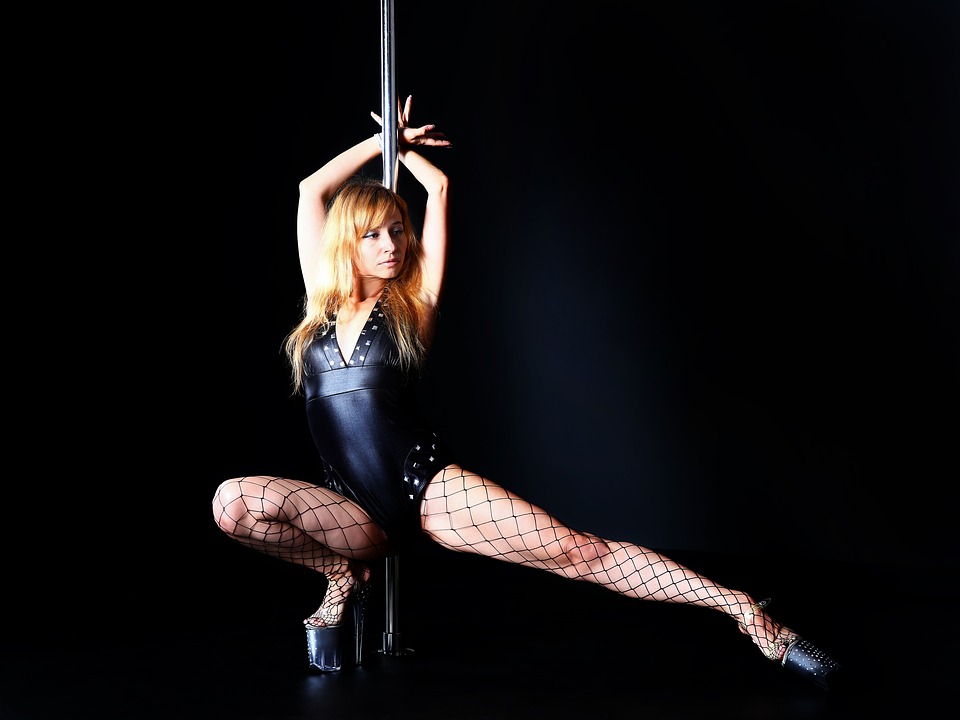
Summary
Welcome » Welcome » The world of the dancer » Dancing while pregnant: good or bad idea?
Dancing while pregnant: good or bad idea?
Dance is a physical activity that provides many benefits both for the health but also for the well-being staff. But is it possible to dance while pregnant? The answer is yes. There are courses specially designed for pregnant women with choreographies adapted. We will see that dancing during pregnancy can be beneficial.
Summary
Dancing while pregnant: the benefits
Pregnancy is a crucial stage in the life of a mother-to-be. During this period, it is important to maintain physical fitness. Being a dancer turns out to be an excellent option with multiple virtues for both the mother and the future baby. Ready to dance while pregnant?
Relieve pregnancy pain
The benefit of prenatal dancing is that it is designed to meet the needs of women during pregnancy. We know that the back pain are recurrent during pregnancy, particularly due to the pressure exerted by the baby on the spine. But, thanks to the gentle, targeted movements dance, tensions are released and the back muscles are strengthened for a optimal relief. Also, the ligaments of the uterus are requested which could lead to pain in the pelvic area. Dance offers fluid movements which help to soften these ligaments to relieve discomfort. Finally, you can find movements made to help strengthen the perineum, an area often put to the test during pregnancy.
Stimulation of blood circulation
When a pregnant woman dances, she stimulates her entire body with broad and rhythmic movements Who activate the muscles, which themselves activate blood circulation. This promotes a better transport of oxygen and nutrients towards all organs, particularly towards the uterus, where the baby is housed. In addition, the stimulation of blood circulation allows prevent circulatory problems such as varicose veins or edema. Finally, good blood circulation allows you to have better tissue oxygenation both for the fetus and for the mother.
Muscle strengthening
Dancing provides muscle strengthening at the level of abdominal and lumbar muscles, which helps to stabilize the pelvis and to maintain the spine. Furthermore, muscle strengthening helps prepare the woman for the efforts required during childbirth.
Weight management
Practicing a gentle activity during pregnancy such as dancing helps prevent excessive weight gain. This allows to reduce the risk of complications linked to excess weight, such as high blood pressure and gestational diabetes. Additionally, dancing helps maintain adequate muscle mass and to prevent excess fat. In addition, thanks to the rhythmic movements, dance allows you to burn calories all in toning the muscles.
Reduced stress and anxiety
Dance activates release of endorphins, which are the hormones of well-being. They provide a feeling of relaxation and happiness, thus helping to reduce stress. Furthermore, dancing acts as a natural regulator that helps stabilize hormonal variations that are normal during pregnancy.
Improved balance and coordination
Dance stimulates body balance thanks to varied and controlled movements who request the stabilizing muscles from the body. Also, this discipline reduces the risk of falls in strengthening core muscles and improving balance. It also develops the motor coordination.
Creating a bond with the baby
By moving rhythmically, the mother-to-be communicates with her baby in a sensory way. The movements are gentle and fluid and can soothe and reassure the fetus. Dance also creates a rhythmic connection between mother and child. In fact, the child can feel the mother's movements to create a intimate bond through dance. Also, this physical activity develops the mother's sensitivity towards the needs and movements of her baby. Finally, dancing helps create precious memories, leaving a lasting imprint on their relationship.

Risks and precautions to take
Dancing is a physical activity that can be practiced during pregnancy provided that certain rules and precautions are followed. So, what are the risks of dancing while pregnant and how can you avoid them?
The risks of dancing while pregnant
Dancing while pregnant can present risks for both the mother and the baby:
- The risk of falling : Pregnancy changes the center of gravity and balance, making it more likely to fall. A fall can cause injury, placental abruption, bleeding or even miscarriage.
- The risk of blow : it is not uncommon for the pregnant woman to receive blows to the stomach, which can damage the placenta, umbilical cord, the fetus or other complications.
Other risks
- The risk of hyperthermia : dancing increases body temperature, which can be dangerous for the baby. If the body temperature is too high, the baby can have congenital malformations, particularly of the heart and brain.
- The risk of hypoxia : dancing increases oxygen consumption. So if the oxygen supply is too low, the baby may experience a deficiency and affect its development and growth.
- The risk of contractions : dancing stimulates the uterus, which increases the risk of contractions. They can be more or less intense or regular and trigger premature delivery.
Recommendations to avoid these risks
It is important to follow a few tips to minimize the potential dangers of dancing while pregnant:
- See a doctor or a midwife before starting the dance to have a green light or not depending on the state of health and the stage of pregnancy.
- Choosing a suitable dance style, especially gentle dances like classic dance, oriental, African or modern.
- Adapt your pace and intensity according to your physical condition.
- It is advisable to take specialized dance classes for pregnant women. That is to say, prenatal dance class, designed by Sonia Duchesne.
- Wear comfortable and appropriate clothing.
- Avoid sudden and violent movements.
- Monitor body signals.
Types of dance to favor or avoid
It is crucial to choose the types of dance appropriate for pregnant women.
Dances adapted during pregnancy
- Classic dance : it promotes posture, body alignment and gentle muscle strengthening.
- Free dance : the mother-to-be can follow her own pace and therefore adaptable to all fitness levels.
- Oriental dance : This dance emphasizes hip and pelvic movements, which increases flexibility and strengthens the core muscles, beneficial during pregnancy.
- Prenatal dance : the courses are adapted to meet the physiological needs of pregnancy.
Dances to avoid
- THE high impact dances as the hip-hop, THE jazz or the contemporary dance which can put intense pressure on joints and ligaments. These are movements to avoid during pregnancy.
- THE floor dances that require getting up and down quickly are risky for the mother due to the pressure placed on the uterus.
- THE couple dances which involve twisting movements as it is not suitable for pregnancy.
How far can you dance?
During the first trimester of pregnancy, the mother is quite capable of dancing in the same way as when she was not pregnant. However, it is essential to listen to the body and reduce the intensity if nausea, fatigue or any other discomfort is felt.
During the second trimester, women feel more energetic and more comfortable in their movements. Then as the pregnancy progresses, particularly in the third trimester, the future mother must be more attentive to her body since movements can become more difficult to achieve due to the size of the belly. In general, it is possible to dance until 7th month of pregnancy avoiding sudden movements, falls, jumps, twists and punches in the stomach.
Can you dance after giving birth?
Resumption of dancing after giving birth depends on several factors. The first is the type of delivery performed vaginally or cesarean section. Secondly, it involves detecting the presence of complications or not such as hemorrhages, infections or even a tear. Third, we must take into account the rehabilitation of the perineum and abdominals then the level of practice before pregnancy.
But in general, it is advisable towait 6 weeks postpartum before resuming dancing and having a favorable opinion from a doctor or midwife. Then, it is necessary to ensure that the rehabilitation of the perineum is complete because it strengthens the muscles which support the genital and urinary organs in order to avoid the risk of incontinence.

To conclude
During this article, we saw that it was entirely possible to dance while pregnant, moreover this activity provides benefits for pregnant women:
- Relieve pregnancy pain
- Stimulation of blood circulation
- Muscle strengthening
- Weight management
- Reduced stress and anxiety
- Improved balance and coordination
- Creating a bond with the baby
But we must pay attention to risks potential :
- The risk of falling
- The risk of blow
- The risk of hyperthermia
- The risk of hypoxia
- the risk of contractions
To avoid them as much as possible, you can:
- Consult a healthcare professional
- Choosing a suitable dance style
- Adapt the pace and intensity
- Avoid sudden and violent movements
- Monitor body signals
Prenatal and postpartum dance
Concerning the forms of proper dances for pregnant women, you can turn to:
- Prenatal dance
- Oriental Dance
- Free dance
- Ballet
Finally, pregnant women can practice dancing until 7th month of pregnancy and resume activity after 6 weeks postpartum.
Dance while pregnant at DECIBEL ®
You would like to undertake a gentle activity to create a intimate bond with your baby ? Dance is the sport for you! DECIBEL ® invites you to review the gentle dance basics respecting your needs and your boundaries. Enjoy 45 minute sessions of dance workout on the rhythmic choreographies who work your cardio And strengthen your abs and glutes.
Be relaxed with dim light and trust our understanding coaches to let you dance at your own pace.
Have a pleasant pregnancy at DECIBEL ®.
Read also
follow us
on instagram
Follow our news,
take advantage of our tutorials and participate to our
contests!
BREAKING NEWS!
Receive our newsletter.






